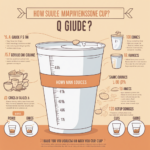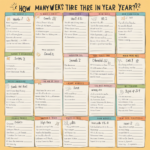Understanding the Basics
Before we dive into specifics, let’s establish a foundation of understanding. In the culinary world, both ounces and cups are units of measurement used to quantify ingredients. An ounce is a unit of weight, while a cup is a unit of volume. The conversion between these two units depends on the density and substance being measured.Fluid Ounces vs. Dry Ounces
It’s important to differentiate between fluid ounces and dry ounces when discussing measurements. Fluid ounces are used to measure volume, primarily for liquids, whereas dry ounces are used to measure weight, typically for solid ingredients. The conversion between these two types of ounces can vary.Standard Conversion: Fluid Ounces to Cups
When it comes to converting fluid ounces to cups, the standard conversion is as follows:- 1 cup is equivalent to 8 fluid ounces.
Converting to Dry Ounces
Converting dry ounces to cups can be a bit trickier since different ingredients have different densities. However, here are a few common conversions for dry ingredients:- 1 cup of all-purpose flour weighs approximately 4.25 ounces.
- 1 cup of granulated sugar weighs approximately 7 ounces.
- 1 cup of butter weighs approximately 8 ounces.
Consideration for Metric Conversion
It’s worth mentioning that the above conversions are most commonly used in the United States, where cups and fluid ounces are frequently used measurements. In some parts of the world, the metric system is more prevalent, and milliliters or grams are commonly used. If you’re working with metric conversions, 1 cup is roughly equivalent to 236.59 milliliters. This is a standard conversion and can be used for both liquid and dry ingredients.Simplifying Measurements
When it comes to precise measurements in the kitchen, having the right tools can simplify the process. Invest in a set of measuring cups and spoons, preferably in both metric and imperial units, to ensure accuracy and consistency in your recipes.Conclusion
Understanding how many ounces are in a cup is essential for successful cooking and baking adventures. Remember that the conversion between fluid ounces and dry ounces can differ, so pay attention to the specific ingredient being measured. By familiarizing yourself with these measurements and using the appropriate tools, you’ll be well-equipped to tackle any recipe with confidence and precision. So next time you’re in the kitchen, take a moment to appreciate the importance of accurate measurements and confidently whip up your favorite dishes or baked goods. Happy cooking!You might be interested in exploring more about units of measurement. Speaking of “ounces,” you might be interested in the Wikipedia article on ounce. Additionally, if you want to learn about the metric system and its conversion, you might find it useful to check out the Wikipedia article on the metric system. Happy reading!







